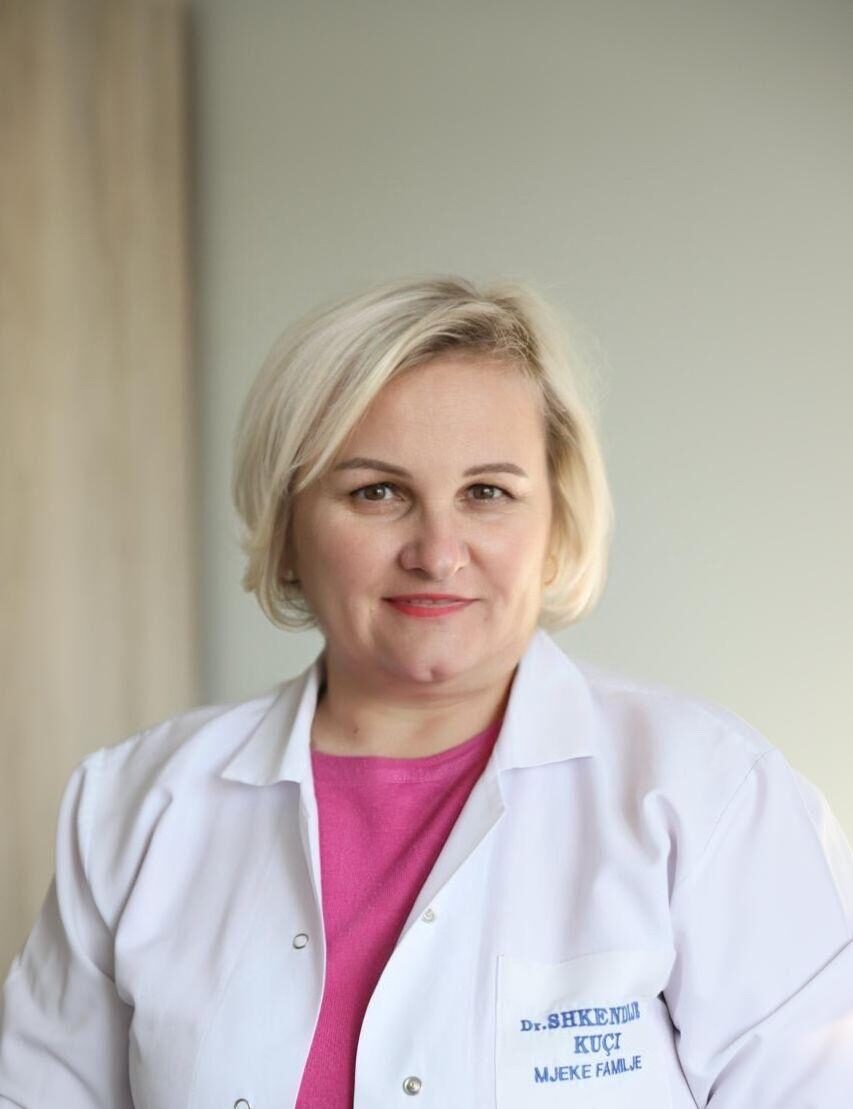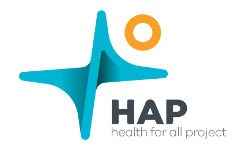
Vorë Health Centre is one of the centres that has been completely renovated with the support of the HAP project. Several significant project interventions are being implemented here, such as the use of the updated protocols for the treatment of 5 NCDs, the provision of home-based care, the implementation of new family nurse profiles in the health centre and health post, as well as the engagement of personnel in Peer Groups as a means of continuing education in the workplace.
We spoke with Dr. Shkëndije Kuçi, director of Vorë Health Centre, about the impact of the project interventions on the quality of service that the family medicine team of this centre provides to approximately 20,000 residents of the area.
Can you tell us about the improvements made to the infrastructure of Vorë Health Center and how they have affected the provision of healthcare services to the residents of the area?
The reconstruction of Vorë Health Center was completed in September 2019, undergoing a radical transformation that enabled the provision of contemporary health services to the citizens of Vorë. With the new building, all humidity and cold issues have been eliminated thanks to the thermo isolation, which provides warm environments during winter and cool ones during summer. The building now has large double-glazed windows in every room and corridor, offering not only good natural lighting and noise reduction but also adequate ventilation. The restoration of the electrical network has facilitated the proper functioning of medical equipment such as laboratory apparatus, X-ray machines, or any other electronic devices. Additionally, the presence of a generator comes in handy in cases of defects or power outages. The building has a continuous supply of both hot and cold water and the new hydraulic system has significantly improved conditions for performing daily tasks. The patient waiting areas offer spacious, quiet, and very comfortable spaces. The good conditions make us feel more motivated and dignified in our daily work and patients are very satisfied with the provided conditions and services.
HAP has equipped your medical staff with medical kits. Can you tell us how they have assisted your staff in providing higher-quality healthcare?
HAP has been and continues to be a source of consistent support for our centre. Equipping all staff with medical kits has facilitated the execution of physical examinations and medical procedures and has been particularly helpful to nurses when catering to their patients. The training provided for the use of the tools has been very beneficial for doctors as well, as it has helped refresh their knowledge and improve the effectiveness of patient visits.
HAP has also focused on training your staff in the use of protocols for five non-communicable diseases. How has this training affected the ability of doctors to diagnose and manage these diseases for the residents of the area?
The training of the family medicine team and the provision of protocols and instruments for the 5 NCDs have given doctors the right orientation for the proper management of these diseases and have facilitated detection through relevant questionnaires that are very practical. Doctors now have a standardized follow-up plan, which helps in preventing complications as patients are regularly monitored. Also, the questionnaires have developed the skills of nurses to assess patients in the use of instruments recommended by treatment protocols.
Home healthcare is a new service you have introduced. Can you explain how this initiative works and the benefits it has brought to the community and medical staff?
This service is offered to all chronically ill patients in advanced stages and terminally ill cancer patients who are unable to come to the centre. This service is mainly provided by family nurses but now meets a new standard, it’s a planned service. The nurse conducts the general visit, documents it in a personal chart, and follows it periodically according to a predetermined plan with dates and times as needed by the patient. There is a database with all the individuals who benefit from this service, determined according to a score agreed upon by doctors and nurses. The nurse’s chart includes the assessment form where the nurse, during the patient’s visit, provides information on home visits and, if necessary, refers the patient to the family doctor for secondary or tertiary healthcare services or to the Vorë municipality for social services. HAP has also supported us with medical equipment such as ECG machines, wheelchairs, and crutches for patient service. In the community, this certainly brings an increase in the quality of the service received while the staff also grows professionally.
What challenges have you encountered in implementing these interventions, and how have you addressed them?
Among the difficulties we have encountered when implementing home-based care is the number of personnel since the service we offer is integrated and not dedicated, which means that our staff offers this service alongside the other services they provide in the health centre. For this reason, the staff’s available time is not sufficient. However, we have tried to carry out visits through a detailed plan. Another difficulty is the patients who live 3-4 km away from health centres, for whom transportation is needed. So far, these have been carried out by medical staff using their own means.
What are your plans to support and further improve healthcare services based on HAP initiatives?
Currently, we are working on the appointment system for planning family doctor visits. Planning all visits will help us better manage the available time for each family doctor.

